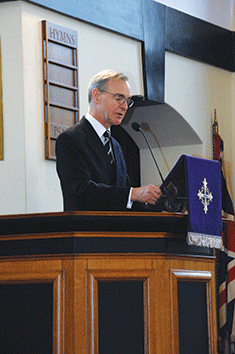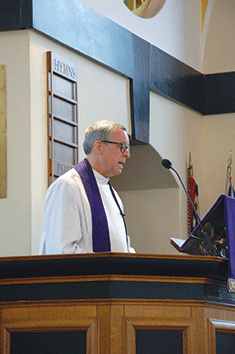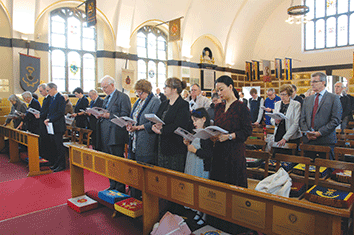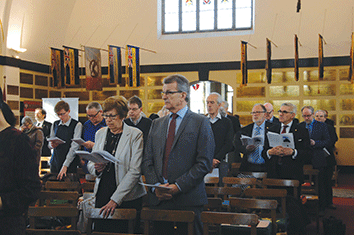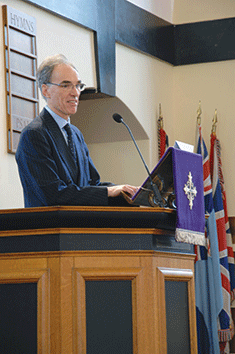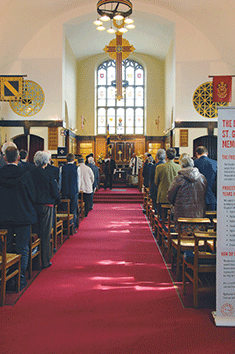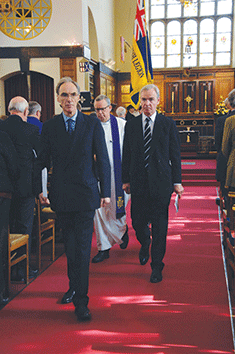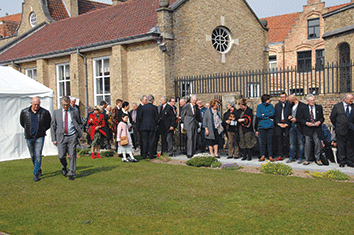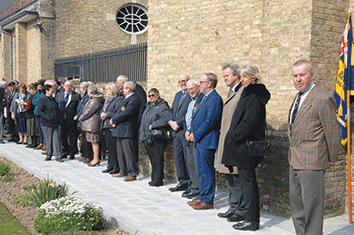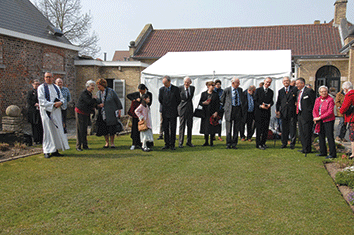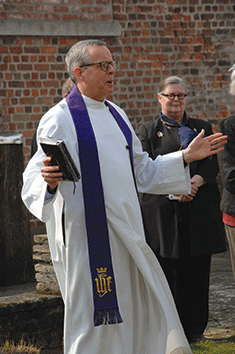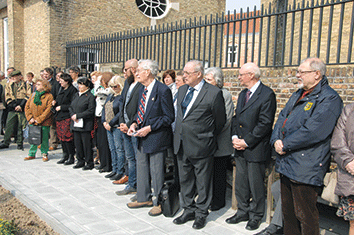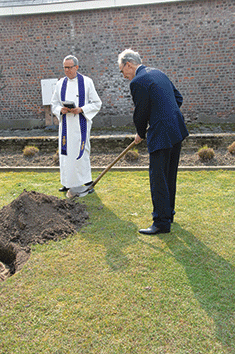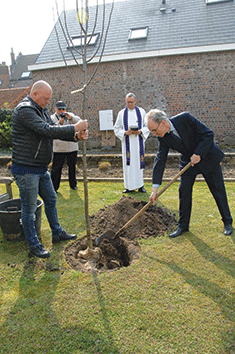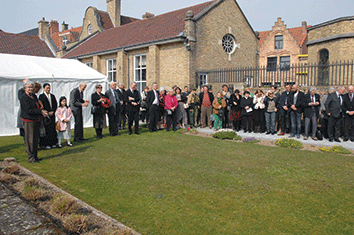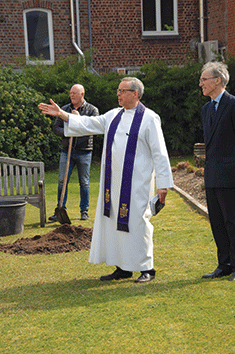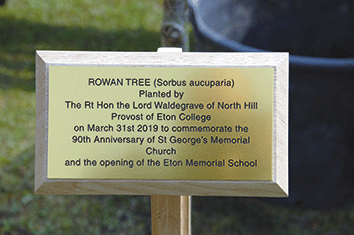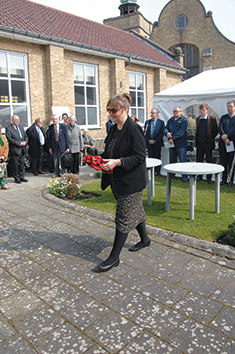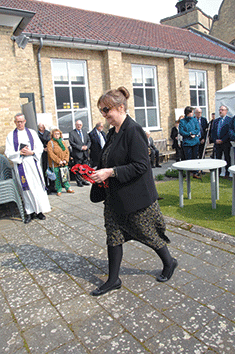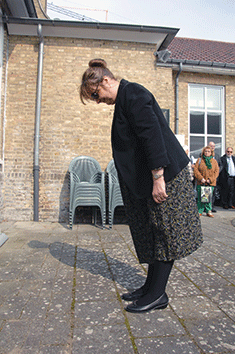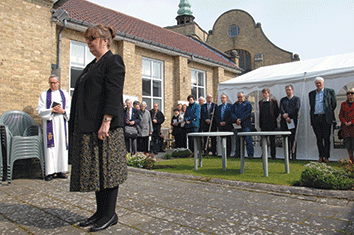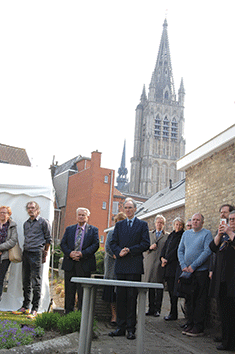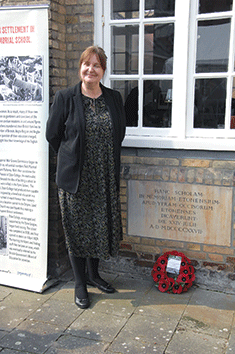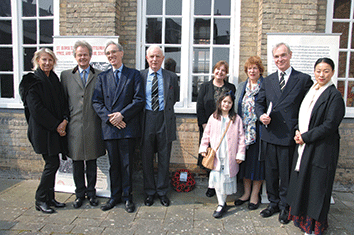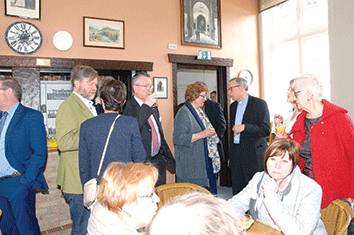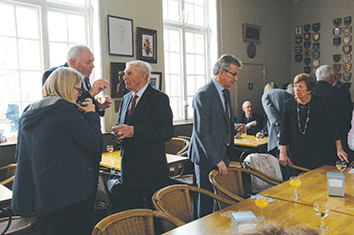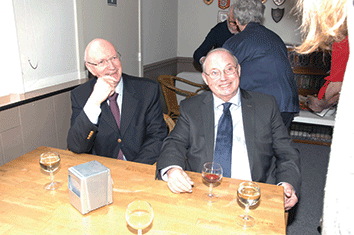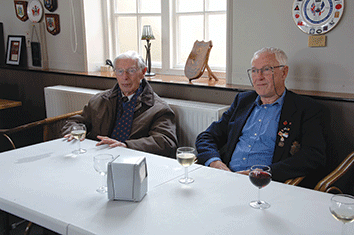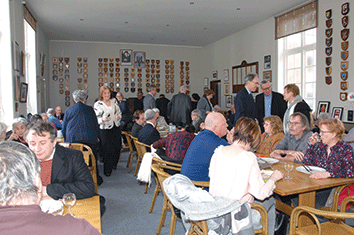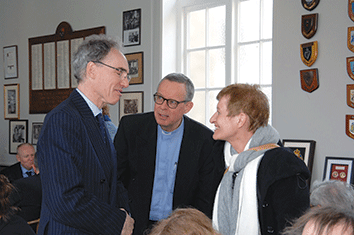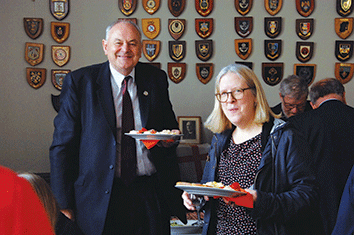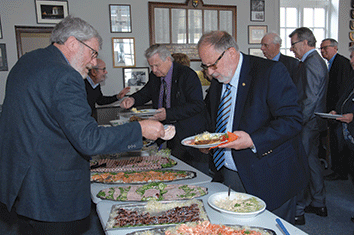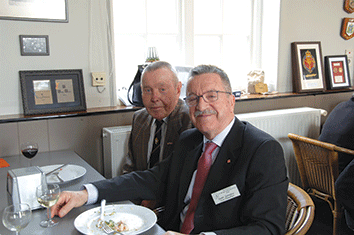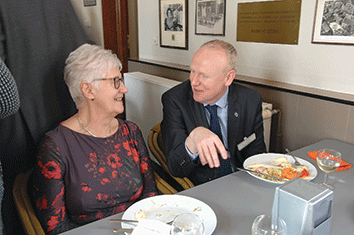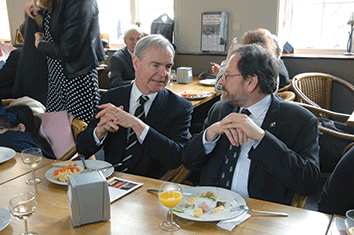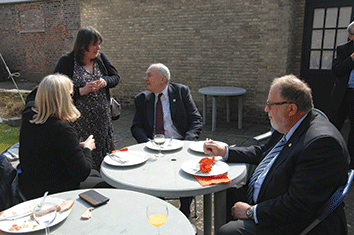
0
P A U L F O S T E R
St George's Memorial Church, 90th Anniversary
Saint George's Memorial Church, Ypres
90th Anniversary of the Consecration of
The Church
Sunday 31st March 2019
In the beautiful Spring sunshine in Ypres the congregation met in St George's Memorial Church to commemorate the 90th Anniversary of its Consecration. Representatives from Old Etonian Association, members of The Friends of St George's Memorial Church, invited guests joined the congregation to celebrate Holy Communion under the direction of The Venerable Dr Paul Vrolijk, Archdeacon of North West Europe.
Dr Andrew Gailey, CVO, the Vice Provost of Eton College gave the most wonderful address that enthralled the congregation. With his kind permission it is printed in full below.
Following the excellent service we were led to the garden behind the Church and next to the Eton Memorial School. A rowan tree was planted by Dr Andrew Gailey, who was representing The Right Honourable Lord Waldegrave of North Hill, Provost of Eton College, who was unable to attend due to ill health.
The last surviving member of Eton Memorial School, George Sutherland, was in attendance who is a sprightly 93 years old and was in extremely good form. See the link to an interview with George on You Tube, see below.
A super buffet lunch was provided in the old school hall that was enjoyed by all.
St George’s Memorial Church Address
Ypres 31 March 2019
given by Dr Andrew Gailey, Vice-Provost of Eton College
At 11am on the 11th of November last year, the boys at Eton gathered in School Yard. Such gatherings of the whole school are rare, for we are a large school and do not have a building that can hold all the boys under one roof. Of course, this particular meeting held a greater significance. We were there in an act of remembrance of all those who died fighting in the First World War. Amid the traditional ceremonial – the prayers, the sounding of the Last Post, the Two Minute Silence scrupulously observed, and the laying of wreaths – there hung in the air something truly awful before our eyes. As I looked over the ranks of boys, all 1320 of them – distinctive in their black tailcoats, just as their ancestors had worn 100 years before – I suddenly realised that they were only a little more than the 1157 Old Etonians who had died in the war. It was as if the dead had returned to show us just what these numbers meant in human terms. Here was the mass of their sacrifice. And they would have looked no different from their successors in the yard last November: young, hopeful faces, eager to embrace the lifetime that was their due. The service over, the boys drifted out to the future that lay ahead and, as they did, the memory of those that died silently retreated back to the memorial tablets that line the whole length of the Colonnade.
But we continue to remember them not simply for the scale of the horror that struck down whole communities across Western Europe. Nor for the dreadful manner of their deaths, so memorably captured by Wilfred Owen:
What passing-bells for these who die as cattle?
Only the monstrous anger of the guns.
Rather what really resonates today is the spirit with which their sacrifice was given. The camaraderie of the Pals regiments, the willingness to support one’s friends in an hour of need, the call of patriotic duty: ‘Greater love hath no man than this, that a man lay down his life for his friends’.
But what about those who were not his friends? The generations he could never have known, the boys in the School Yard last November, for instance? When I was a house master I would read out the Kohima Epitaph and challenge the boys if they would do the same as their predecessors in 1914:
When you go home,
Tell them of us and say:
For your tomorrow
We gave our today.
Tell them of us and say:
For your tomorrow
We gave our today.
Who honestly could say yes they would do likewise? And yet in 1914 they did; and did so fearing what would come every step of the way.
What they gave us was Freedom. The freedom to forget as well as to remember, and hence the importance of places like this St George’s Memorial Church in Ypres ‘lest we forget’. In the endless ranks in the well-kept cemeteries, we have a stark reminder of the inhumanity of man to man that potentially lies within us all. A reminder too of the greater importance of the struggle to promote the human virtues of tolerance, of love of our fellow man (and not simply a gruff respect), above all of compassion. 2018 saw us add another memorial to the Eton roll of honour in Cloisters. It was in memory of Bruny Schroder, of the great Anglo-German banking family. Bruny, a young Etonian, was staying with his German cousins in August 1914. He volunteered with them for the German army and was killed in September 1915. Bruny makes it 1158 Etonian dead. We are a hundred years too late of course, but it is an illustration of how this war keeps challenging us.
It has been the unlucky fate of Ypres that the British always seem to end up fighting here. Agincourt, the Spanish Armada, Waterloo and so again in August 1914. Many Etonians fought in these fields then and of them 342 were not to return home. Yet after such bloody conflict, it was telling and inspired that those that survived the Ypres Salient should seek to remember their lost friends by building a school here. They would put their trust in education to heal and bring together; a place where the young could learn the values of truth, of respecting your neighbour as yourself, of learning to live through others. The School is no more alas, a victim of the Second World War, but in this place are still the echoes of lessons taught there that will never grow old. Echoes that resounded loud and clear, as we gathered last night to witness the humbling act of remembrance at The Menin Gate. Echoes that could be heard too when we met in School Yard as the clock in Lupton’s Tower rang out at 11am on the 11th of November 2018.
© PAUL FOSTER - ALL RIGHTS RESERVED.








